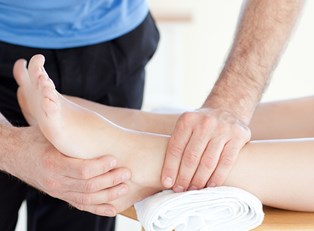Projections by the Bureau of Labor Statistics (BLS) predicted a 19% increase in massage therapy employment between 2008 and 2018. This potential increase caused massage therapy schools to branch from on-campus classes into online programs within the last five years. Though essentially equal, you will have to decide which is a better fit for you.
The Basics of Massage Therapy
Since massage therapy has very little federal regulation, each state is allowed to determine its own requirements for the licensing, certifying, and educating of massage therapists. Programs vary anywhere from 400 to 1,000 hours of practice and instruction and may last more than a couple of weeks to a few months. However, no matter which state you are in, general instruction across the country covers physiology, anatomy, body movement, business management and ethics, and psychology.
Some programs also assess the physical condition of potential therapists to ensure their bodies can handle the rigor and demand of repetitive tasks and standing for up to eight hours a day. Before starting, check with the state(s) you plan to work in for their specific requirements and regulatory agencies. Some states require no licensing, while others require a state test or one of two national exams – the Massage and Bodywork Licensing Examination (MBLEx) or the National Certification Examination for Therapeutic Massage and Bodywork (NCETMB).
Online Massage Therapy Training
Online programs vary between self-paced/accelerated programs and standard course formats. Self-paced/accelerated programs allow students to work at their own pace. Usually, all of the material is downloaded onto a user’s computer or device, or it is accessed continuously from a server online. Students read and study the material, submit coursework, including reading assignments and essays, and take tests online. These tasks can be completed from anywhere with a reliable internet connection and at the student’s own learning pace.
Standard course formats work like traditional schools, with weekly readings, assignments, and tests that must be completed by specified dates. Both formats usually provide instructional video and other materials to help with the training. However, because of differing state regulations, some states require students take a final test in person at a pre-established location so that a licensed professional or educator can observe them in practice. Some states also require this for final certification and licensure.
On-Campus Massage Therapy Training
On-Campus training is usually very similar, except that all classes and work must be completed at the pace set by the instructor. Basic understanding of the sciences is required just like in online classes. However, the biggest advantage to on-campus training is that you will be monitored directly by instructors and will be given direct input on your technique. Also, many on-campus programs cut out the middle work of becoming licensed.
Choosing Online or On-Campus
If you have a demanding schedule that can’t be adjusted, then an online program will most likely be best for you. However, if you are looking to gain valuable hands-on experience, you will need to attend an on-campus program. The best choice for you will need careful consideration and a strong understanding of how you learn best.



